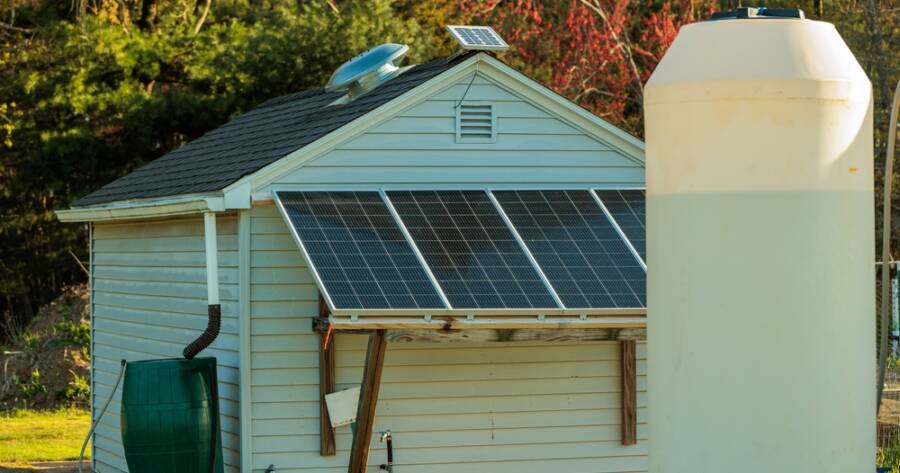The idea of living off the grid, disconnected from public utilities and the demands of modern society, has gained popularity in recent years. For many, the appeal lies in the desire for self-sufficiency, sustainability, and a simpler lifestyle. But before making the move, there are essential factors to consider to ensure a smooth transition and long-term success.
What Does Off-Grid Living Mean?
Living off the grid means you are not reliant on public utilities like electricity, water, or natural gas. People who choose this lifestyle often generate their own power through solar panels or wind turbines, collect rainwater, and find ways to heat and cool their homes without traditional systems. It’s about being self-reliant and reducing your environmental footprint.
For some, off-grid living is a temporary choice or a weekend getaway. For others, it’s a permanent shift in how they approach life. Regardless of your reasoning, it’s important to understand the full scope of what living off the grid entails.
Preparing for Off-Grid Living
Before you make the move, there are several preparations you need to make. First, you’ll need to secure a piece of land that is suitable for off-grid living. This might involve finding a remote property with access to natural resources like water, sunlight, and wind. You’ll also need to ensure that the property is legally zoned for off-grid living, as some areas have building codes and restrictions on alternative housing and energy sources.
Once you’ve selected a location, it’s crucial to plan for how you’ll provide your basic needs: power, water, and shelter. Without these, off-grid living can be incredibly difficult. A reliable power source is essential, whether that’s solar, wind, or even a backup generator. You should also consider the potential for collecting rainwater or drilling a well, both of which require significant effort, upfront costs, and maintenance.
Energy Sources for Off-Grid Living
One of the most important aspects of off-grid living is finding a sustainable energy source. Solar power is the most popular choice due to its widespread availability and the technology advancements that make it easier to implement. You’ll need to invest in solar panels, batteries for energy storage, and an inverter to convert the energy to usable electricity.
Wind power is another option, especially if you live in a windy area. Wind turbines can supplement your solar energy, providing power when the sun isn’t shining. If neither of these options suits your location, you might also consider a backup generator for emergencies.
Energy efficiency becomes crucial when living off the grid, as you’ll need to make the most of the power you generate. This means using energy-efficient appliances and lighting, as well as creating a home that is well-insulated and doesn’t rely heavily on electricity for heating and cooling.
Water Supply and Waste Management
Water is another critical resource for off-grid living. Without access to a public water system, you’ll need to have a reliable method of water collection. Rainwater harvesting is a common practice, where rain is collected in barrels or storage tanks and filtered for use. If your property is located near a natural water source, you might consider installing a well or utilizing a stream, but this requires permits and maintenance.
In addition to having a clean water source, you’ll also need to think about waste management. Traditional septic systems can be expensive and are often not feasible in remote areas. Composting toilets are a popular alternative, as they reduce water usage and can be used to create compost for gardening. Another option is a greywater system, which recycles water from sinks and showers for non-potable uses like irrigation.
Building an Off-Grid Home
When it comes to shelter, building an off-grid home requires careful planning. Many people choose to build their own homes using sustainable materials like cob, straw bale, or timber. These homes are not only eco-friendly but also help to maintain a comfortable temperature naturally, reducing the need for external heating or cooling.
If you’re not interested in building from scratch, there are alternative options such as tiny homes, yurts, or converted shipping containers. These structures are often more affordable and easier to maintain, making them ideal for those living off the grid. Regardless of the style you choose, it’s important to ensure your shelter is insulated and weatherproof to ensure comfort year-round.
Off-grid living also means becoming skilled in basic maintenance and repair, as you’ll need to be self-sufficient when it comes to fixing things like leaks, electrical issues, and other problems that might arise in a remote location.
Potential Challenges of Off-Grid Living
While off-grid living offers many benefits, it’s not without its challenges. The most immediate challenge is often the initial investment. Solar panels, wind turbines, and other off-grid systems can be expensive upfront, although they can save you money in the long run by reducing utility bills.
Another challenge is the isolation that can come with living in a remote area. While some people relish the quiet and solitude, others might find it difficult to be so far removed from social networks and modern conveniences. You’ll need to be prepared for a lifestyle that requires self-reliance, problem-solving, and sometimes, a lot of patience.
Weather can also be a challenge. Harsh winters or droughts can affect your ability to generate power or collect water. Having backup systems in place and ensuring you have a reliable emergency plan is essential.
Is Off-Grid Living Right for You?
Off-grid living can be an incredibly rewarding and sustainable lifestyle for those who are prepared for the challenges it brings. By carefully planning your energy, water, and shelter needs, and being ready to adapt to unexpected situations, you can enjoy the freedom and independence that comes with living off the grid.

